
Unique observances for everything from rats to limericks are celebrated in a variety of poems and poetic forms. When combined with comic illustrations, the lighthearted collection is sure to keep readers chuckling from cover to cover.
World Rat Day: Poems About Real Holidays You’ve Never Heard Of

Textured borders contain each double-page illustration which places the familiar cumulative song on an African savannah. Rebuses are included in the body of the book and again in a key; music is also included to make this version ideal for sharing.
There Was a Tree

Stripes are found in nature in a variety of flora and fauna in many habitats. From exotic to domestic, revel in observing stripes in carefully crafted illustrations and lyrical text. Additional information and a playful call to match animal with stripe ends this handsome volume.
Stripes of All Types

Rain spoils Max and Ruby (and friends) outdoor plans but their clever grandmother’s treasure hunt more than makes up for it. Clues in the form of traditional rhymes are numbered, hidden beneath small but sturdy flaps as well as in the spot art are sure to make this a modern classic.
Max and Ruby’s Treasure Hunt

Homographs make sense in context. A word wall of words that are spelled alike but are pronounced differently (depending on the context in which they are used) may be developed inspired by this funny animal-filled “zoo.”
Zoola Palooza: A Book of Homographs
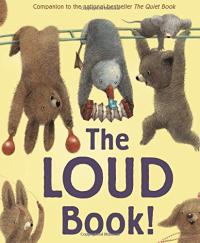
There are many kinds of sounds. Use this book as a jumping off point for loud sounds, onomatopoeic sounds, or use The Quiet Book (Houghton) for the opposite of loud. These books might also inspire a word wall for emotions (e.g., how does this kind of quiet/loud make you feel?).
The Loud Book
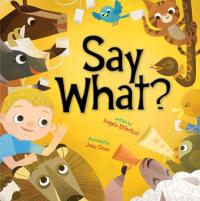
Are animals and their familiar animal sounds really trying to say another word in English? (For example, “When a hoses says NEIGH,/does she really mean HAY?”) Word walls could be made of rhyming words (or word families) or of animal sounds in English as well as what animals say in other languages.
Say What?
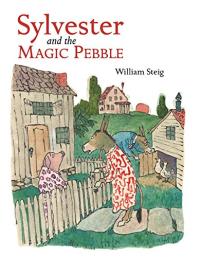
When a young donkey named Sylvester comes across a magic pebble, he saves himself from a confrontation with a lion by wishing himself into a rock. Frantic parents search for Sylvester until they stop for a picnic on a large rock. Rich language and humorous cartoon illustrations make this a memorable classic.
Sylvester and the Magic Pebble

One animal’s claim is followed by others who are successively bigger, smaller, etc., each using rich (and richer) descriptors.
Big, Bigger, Biggest
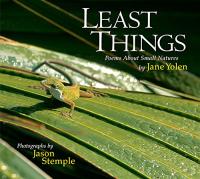
Short poems (haiku) were written in response to but also evoke creatures shown in crisp close-up photographs of small animals and insects in their natural surroundings. This collection and others by Yolen/Stemple introduce information about nature, and could be used as part of the science curriculum.
Least Things: Poems about Small Natures
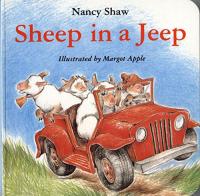
Silly rhymes about silly activities make the words jump off the page, complemented by humorous illustrations.
Sheep in a Jeep
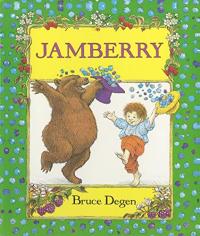
Jaunty rhymes (that just may be ‘sing-able’) are likely to lead to wordplay (literally) as one follows the animal cast play with berries of all kinds.
Jamberry
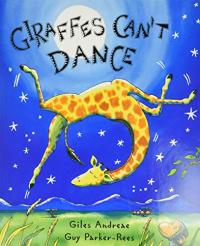
Gerald, the giraffe, is told by the other jungle animals that he can’t dance. Of course, they’re proven wrong as Gerald does his thing in this rhyming tale. This book may also inspire alliterative use of language.
Giraffes Can’t Dance

Full color photographs chronicle the search for missing mountain gorillas. It is the gorillas that find the young Miza and restore him to his family.
Looking for Miza

Tongue twisters abound in this lively and easy to read book by the famous doctor.
Fox in Socks
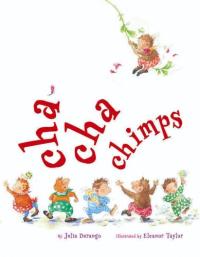
Chimps from one to ten counting sneak out to dance their rhyming way around and through this very funny counting book.
Cha Cha Chimps

A homeless boy and his dad make their home in a busy airport.
Fly Away Home

Clear, textured illustrations of animals and their special parts (e.g., tail, nose) focus readers on the special function of each. Not only is it likely to generate a description of the appendage but its function (what it does), and of the animal and its environment. Other books by Steve Jenkins, such as Biggest, Strongest, Fastest (opens in a new window), may also generate rich descriptive language.
What Do You Do with a Tail Like This?
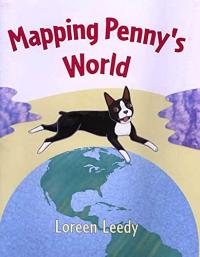
A girl maps her dog Penny’s world from her room, to the neighborhood as well as the tools she uses.
Mapping Penny’s World
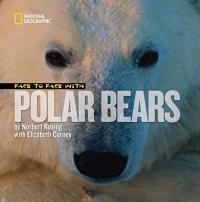
Norbert Rising finds himself in dangerous situations in the Arctic as he studies polar bears. This book connects children with the consequences of global warming, and gives practical advice on how to help save our white-furred friends.
Face to Face with Polar Bears
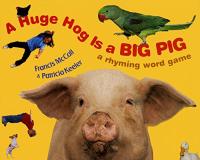
This rhyming words game is illustrated with crisp photographs and is sure to tickle the imagination as another rhyming description is sought. For more experienced readers (grade 2-3), try Eight Ate: A Feast of Homonym Riddles (opens in a new window) by Marvin Terban — just what the title indicates.
A Huge Hog Is a Big Pig

When Penny picks up a marble near her neighbor’s home, she begins to imagine that it really belongs to Mrs. Goodwin. In short chapters with Henkes’ signature illustrations, the young mouse successfully works through her guilt to a very satisfying conclusion.
Penny and her Marble
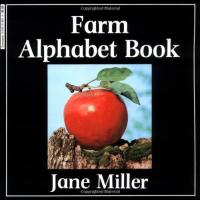
The alphabet is presented in upper and lower case letters accompanied by full color photographs that introduce farms and things associated.
Farm Alphabet Book

A rubber duck is among the bathtub toys washed overboard and into the ocean. After a long journey, the duck narrator is found by a child. Inspired by actual events and vividly illustrated with textured paper cut images.
